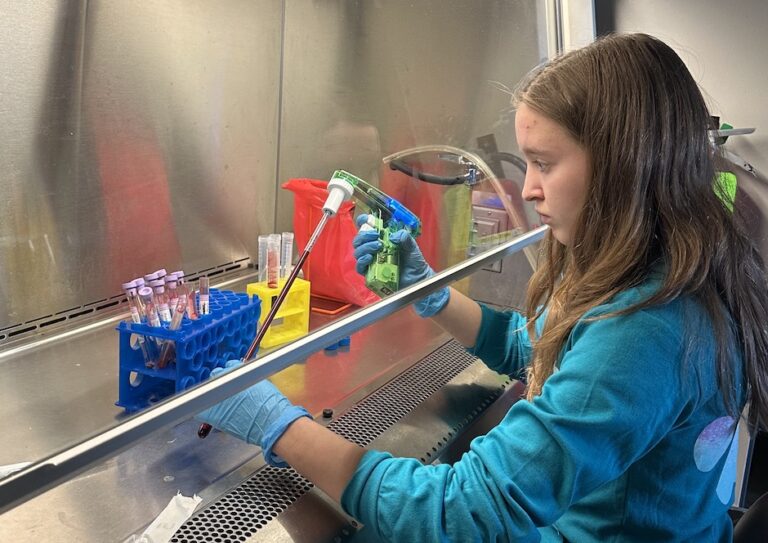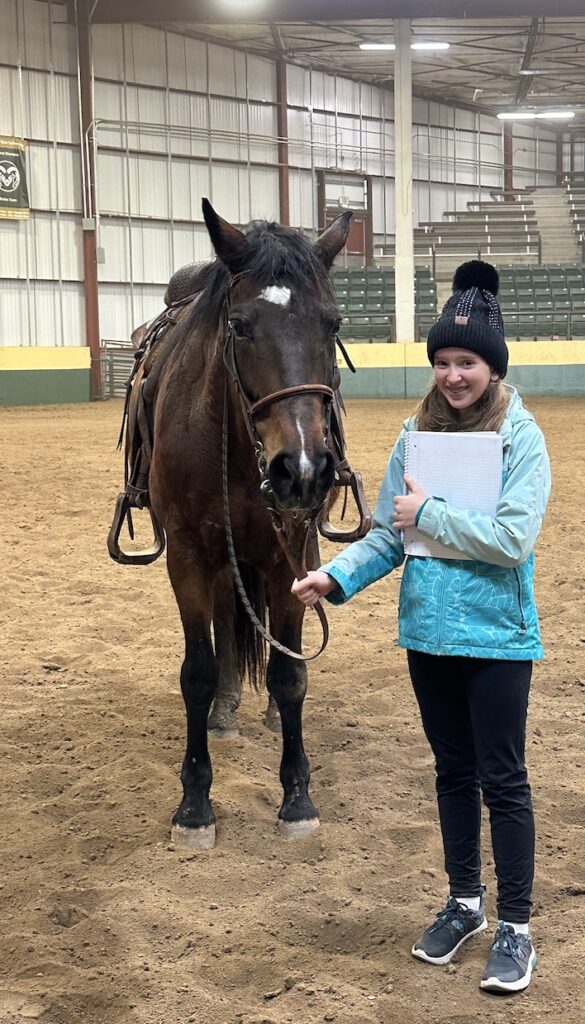

It all started with horse riding lessons. Samantha Keeney, an 8th grade student at Summit Middle Charter School from Boulder, Colorado, wanted to know more about what was happening inside her horse during her lessons. Her upcoming district regional science fair was the perfect opportunity to find the answer.
After reading about equine research at Colorado State University, Keeney contacted CSU faculty to answer remaining questions about exercise stress and its impact on a horse’s physiology. Her curiosity led her to work with faculty in CSU’s Department of Clinical Sciences.
“Knowing that CSU is a really good vet school, I reached out and figured out that I wanted to study cytokines and cortisol,” said Keeney.
Do horses get stressed out?
We know that exercise stress in horses activates multiple hormonal systems including cortisol, a common stress hormone found in most mammals, including humans. When cortisol is released in horses, it provides energy and enables them to escape or cope with stressors. Like humans, cortisol levels in horses vary depending on their age, fitness, and training level. Levels increase depending on the type and intensity of exercise. Cortisol has even been found to increase in sport horses after exercise with high emotional involvement.
But what else is happening inside a horse when cortisol levels are increased? Building on existing research, Keeney and Drs. Lynn Pezzanite, Luke Bass, Steven Dow, Michael Lappin and Gregg Griffenhagen, created a study to examine the effects of moderate exercise on a horse’s immune response using an expanded biomarker panel not previously investigated. They sought to answer if increased cortisol levels correlated to an increase in specific cytokines, a type of protein made by immune and non-immune cells that help the body fight cancer, infection, and other diseases.
Hidden immunity-building

Cortisol levels were checked in the plasma of horses following 10-minute intervals of continuous, moderate exercise that alternated between walking warm-ups, trotting, and loping. The study found that cortisol levels correlated with elevations in two cytokines – granulocyte colony stimulating factor (G-CSF), a key growth factor recognized for its broader roles in tissue repair and regeneration during exercise, and eotaxin, a protein that stimulates white blood cells in the horse’s immunity system. While previous studies have shown that exercise stress affects plasma hormone levels, which correlated to increases in specific inflammatory cytokines, neither G-CSF nor eotaxin have previously been investigated nor reported to be elevated following exercise in horses. Discovery of the correlation of these two cytokines to exercise stress and their potential role in health and immunity in equine athletes could have significant potential impact to recognize stress and therefore mitigate injury in horses, with broad downstream effects to horse health.
“Our overarching goal is always to optimize horse health and welfare during and after athletic performance, and improved understanding of horses’ immune responses during exercise stress may help us to design studies towards that goal,” said Lynn Pezzanite, DVM, PhD, assistant professor, and equine surgeon from the Translational Medicine Institute at CSU.
“Working with students like Samantha, with a passion for a career in science and veterinary medicine, is such a pleasure and gives me great hope for the future of veterinary medicine and equine practice.”
Is moderate exercise an immunity-booster for equine health? Keeney recently presented these initial findings in the district regional science fair and placed third in Biomedical and Health Sciences. She will be named as a co-author for any resulting publication of this study with CSU.
